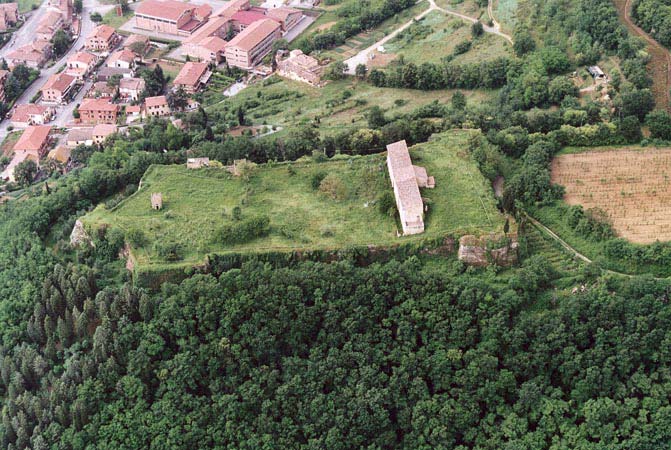 Time and Location
Time and Location
T 10:40-11:30
R 10:40-12:35
FLI 101
Description
The Middle Ages (ca. 500-1300) was a period of fundamental transformations in Italian history. At the same time it was the only period between Antiquity and the modern age in which serious attempts were made to turn Italy into some sort of independent political unit. Such attempts foundered on the same rocks that exist today: the continuing crucial importance of local identities and problems. Before the modern era, Italy was a single independent state for only a few decades between the 460s and the 530s. However, unlike the early modern period, a good portion of the mainland was in some sense part of the same state for most of the early medieval period, and the kings of Italy, Ostrogothic, Lombard, and Frankish, were both powerful and rich. Early medieval Italy (with the exception of Rome and the papacy) has not traditionally attracted the interest of historians, despite its great significance for later developments. Italy, the fount of culture and civilization, shows very little in common with contemporary developments in early medieval Europe, except, perhaps a considerable legal sophistication, and the occasional chronicler with (Paul the Deacon) or without real literary abilities (Liutprand of Cremona). During the early Middle Ages, Italy, the mercantile center of the ancient and medieval Mediterranean, seems to have temporarily lost contact with the sea and to have been dominated by the rough warriors of the Germanic north, who introduced new forms of social organization: a closed economy, the manor, and feudalism. During the early Middle Ages, Italy first became part of the northern Europe (as opposed to Mediterranean or southern Europe). A world of rural communities, with a small elite of aristocrats dominating and feeding itself from the labors of the peasantry, Italy before AD 1000 underwent exceptionally intense changes. Economic growth, territorial expansion, and dynamic cultural and social change, all marked the vitality of Italian society between 500 and 1000.
In this course we will examine the various aspects of this transformation. We will initially follow a topical, rather than chronological order. Our focus will be on the mainland, but we will also look at some of the neighboring areas, such as Sicily and Sardinia.
Textbooks
- Chris Wickham, Early Medieval Italy: Central Power and Local Society, 400-1000. Ann Arbor: University of Michigan Press, 2001 [hereafter Wickham]; available as e-book through Library West
- David Abulafia (ed.), Italy in the Central Middle Ages,1000-1300. Oxford/New York: Oxford University Press, 2004 [hereafter Abulafia]; on two-hour reserve in Library West
- Katherine Ludwig Jansen, Joanna H. Drell, and Frances Andrews, Medieval Italy. Texts in Translation. Philadelphia: University of Pennsylvania Press, 2009 [hereafter Jansen]; on two-hour reserve in Library West
- (optional) Christopher Kleinhenz, Medieval Italy. An Encyclopedia. New York: Routledge, 2004 [hereafter Kleinhenz]; available in the Reference section of Library West
Assignments
There is no attendance policy, but you are responsible for attending all lectures and reading the required texts. Class participation may be taken into account to determine the overall grade. The basis for evaluation of performance will be four quizzes, 10 journal entries, and two exams (Midterm and Final).The quizzes are exclusively based on primary source readings from your Jansen book and will consist only of multiple-choice questions (no essay). A careful study of the readings is necessary for a good performance at the quiz. The journal entries consist of e-mail messages sent on my address (fcurta@ufl.edu), in which you will discuss briefly the readings for the topics marked with (*) in the list of course weekly topics below. You can ask questions about the readings and/or make comments, raise issues that need clarification, etc. All journal entries should arrive at least 15 hours before the corresponding class meetings. Be sure to keep your postings to a reasonable length (175 to 250 words long). I do not want you to spend too much time on them, but I expect you to give an articulate presentation of your thoughts. Needless to say, I also expect you to check on correct grammar and spelling before clicking on “Send.” The Midterm and Final exams will cover everything from lectures and readings. Both will consist of a short answer portion and a longer essay. Make-up quizzes, journal entries, or exams exam will be given only for very serious reasons. In every case, I will ask for written justification or proof. Extra-credit work will be accepted only for students with active participation in class discussions. The format of the extra-credit option shall be discussed with the instructor during regular office hours. The following point system will be used in determining the final grade:
Quizzes: 20 points
Journal entries: 20 points
Midterm: 30 points
Final exam: 30 points
Total: 100 points
| Points | Grades |
| 97-100 | A |
| 93-96 | A- |
| 88-92 | B+ |
| 81-87 | B |
| 75-80 | B- |
| 68-74 | C+ |
| 61-67 | C |
| 55-60 | C- |
| 48-54 | D+ |
| 41-47 | D |
| 35-40 | D- |
| under 35 | E |
Weekly Topics
Click here to view the weekly topics for this course